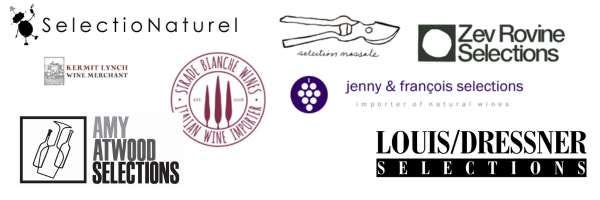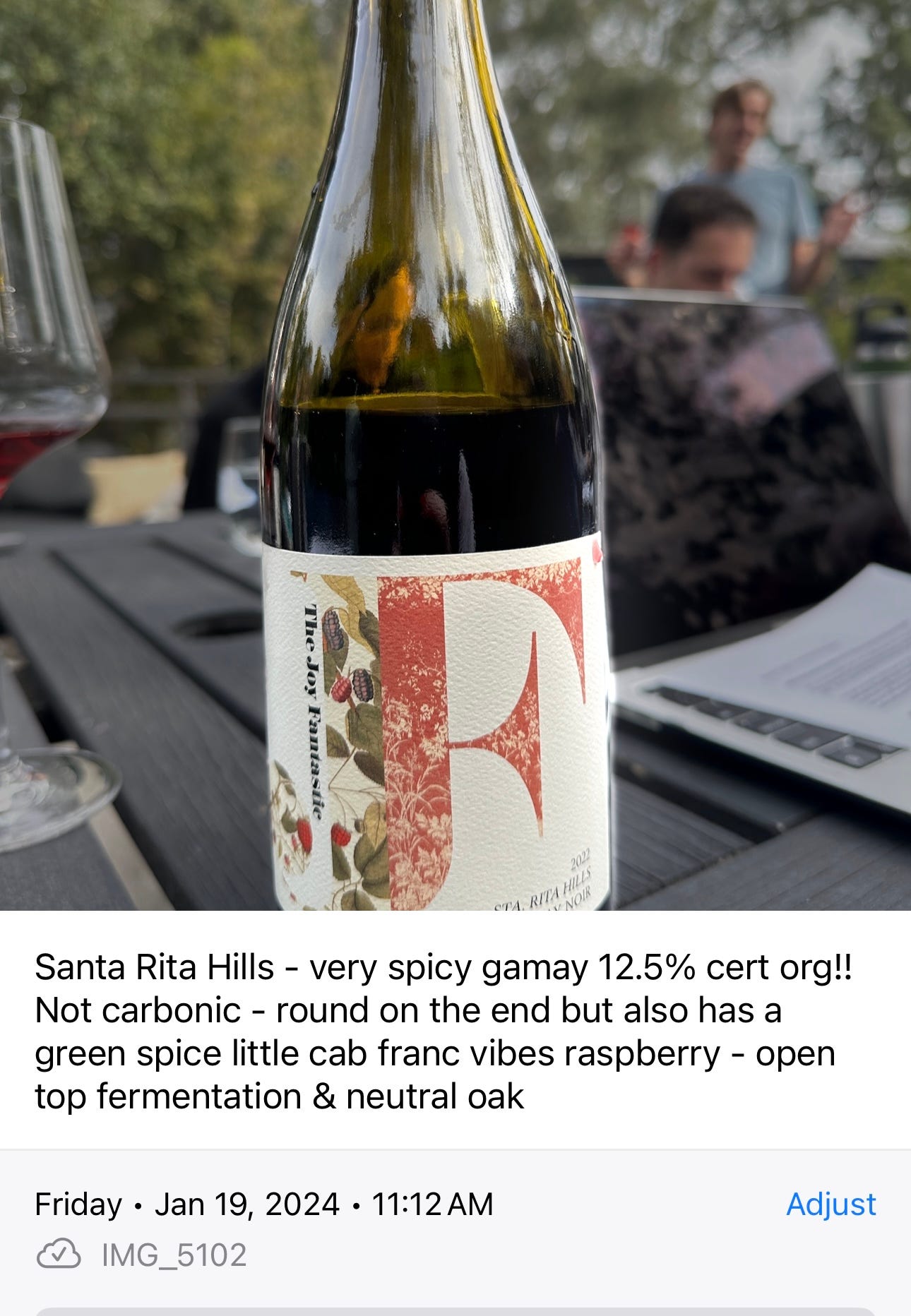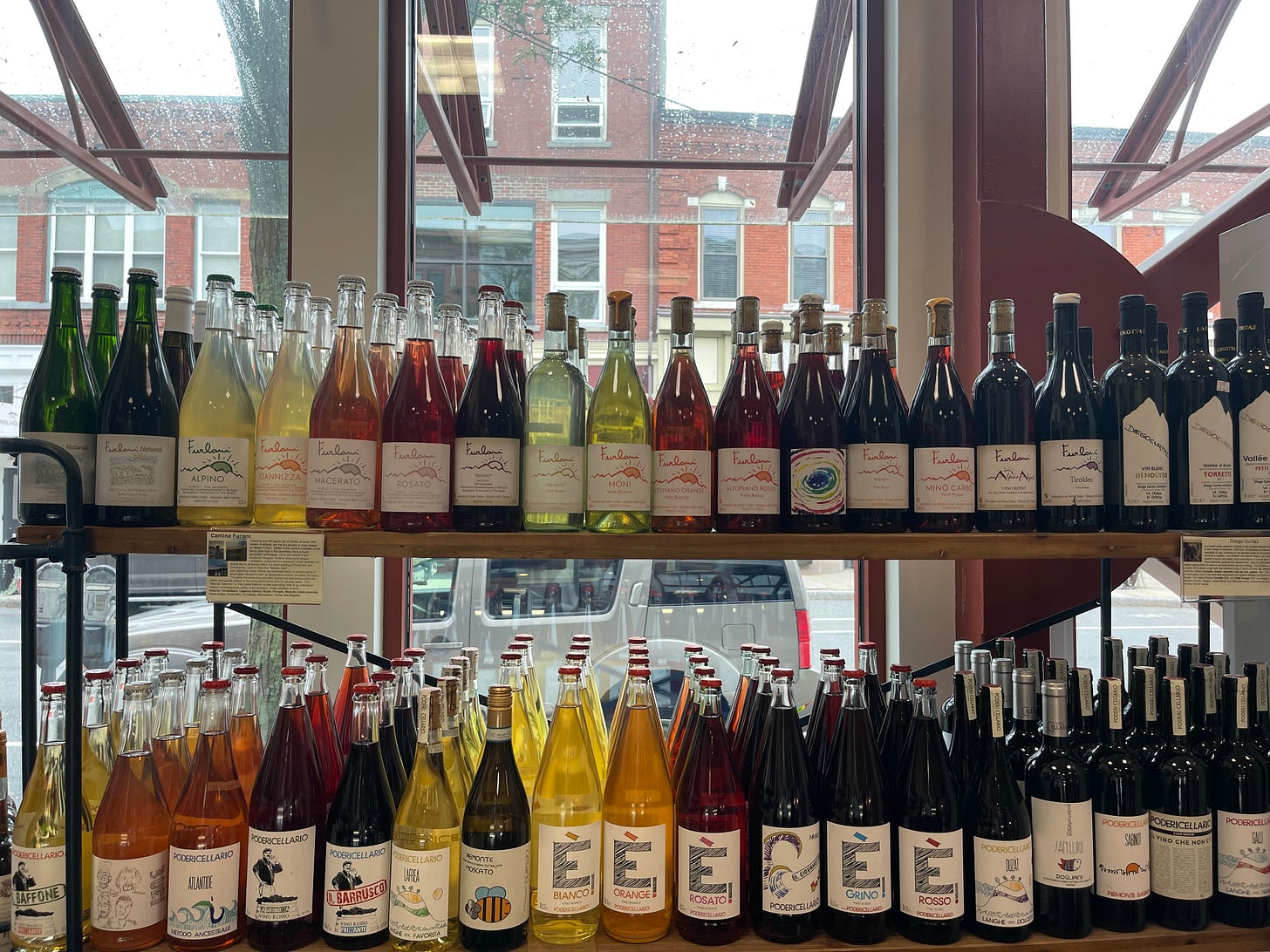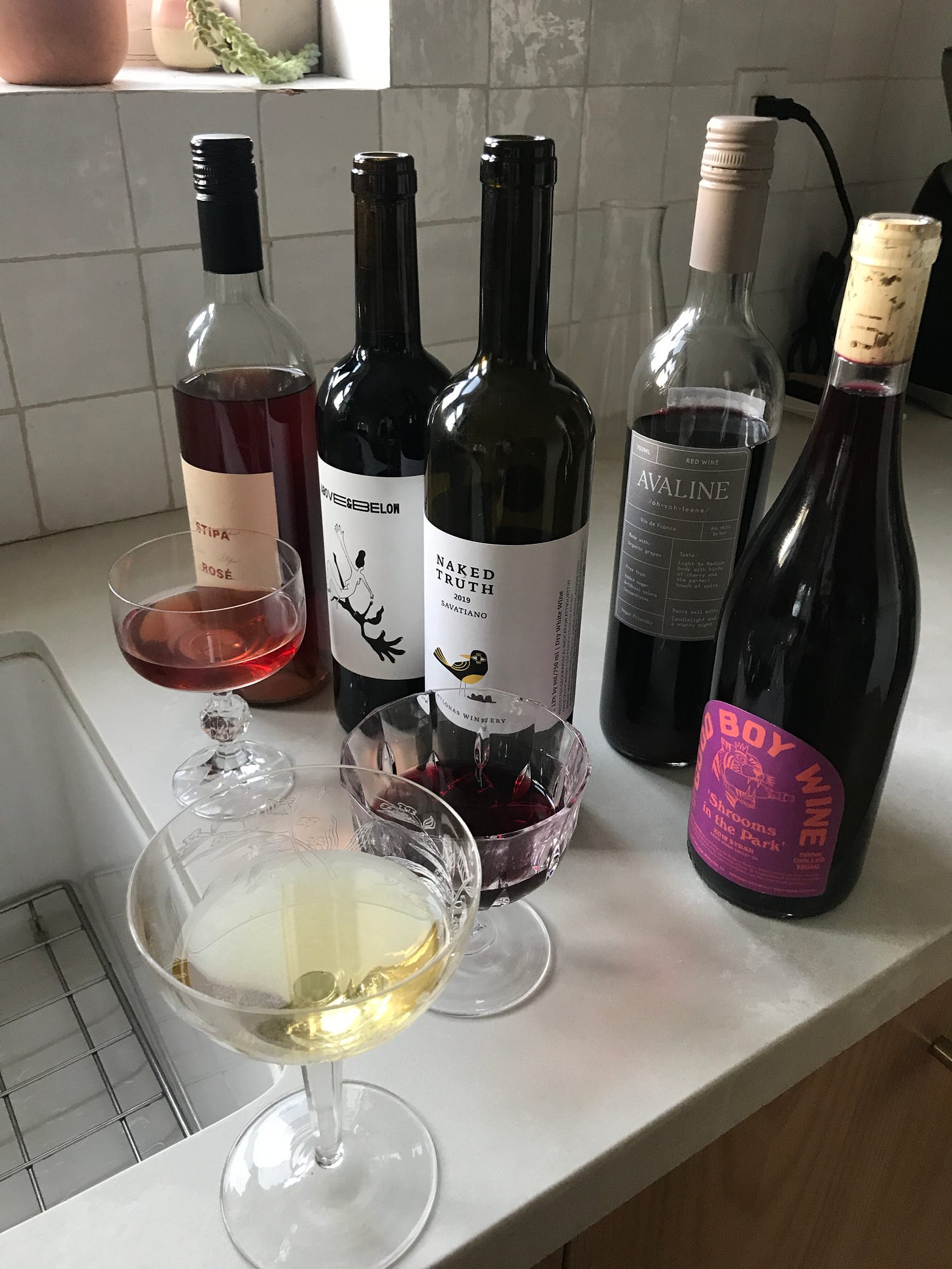


I attended a fascinating wine seminar the other day where I was blindfolded, and then experienced the wines. Without that sense available to me, taste, smell etc. were naturally all dialed up a bit.
Seeing as this lesson is about sight (pun intended), the tasting I had reminded me how much inherent bias and judgement (good and bad) comes from what we see. Do we like the label? Is it a dark rose, or just a pale kiss of pink? Judging books by their cover is something we as humans do instinctually, so this is merely a reminder of that bias.
Now there is a LOT of proper jargon to describe what we see, and while those are all well and good, I’m going to lean into what is helpful for you to take in with your eyes.
It’s worth repeating, learning about wine is like learning a new language, so give yourself some grace and have fun!! After all, it’s the world’s longest running legal drug, or as I lovingly, and romantically like to call it, “drinkable art”. So take in your glass/bottle like you’re attending a movie in theater/live concert you’re excited about: ultimately you’re locked in, and ready for the ride.
And visually, wine gives that in two ways: its label and its color.
label: from eye-sore to eye-catching
Likely the first thing you see, is how a wine is packaged. Walk into any wine shop, and just how certain works of art speak to you at museums, there will be wines you buy just because of its label (guilty) and also wines you’ll turn your nose up at because of their label (also guilty).
So let this be your permission not to feel silly if you want to buy a wine with a cute-ass label. Good job winemaker for grabbing your attention when there are thousands of wine to choose from! On the flip side, I encourage you to open your mind to the bland labels. A lot of times, for the smaller wine producers, it’s a one woman/man/family operation, and visual art might not be their forte.
There are certain other cues present on the label to help you discern if it’s more than just a pretty face:
-Certifications: I am a hugeeee pro for knowing how your wines are farmed!! As my page suggest with natty, and from drinking these kind of wines over the years, with happier and healthier soil, comes happier and healthier grapes, comes an overall better-for-the-environment-(and yourself)-product.


-Importer Listed: You’ll start to recognize & champion your favorite folks who are bringing wines into the US. A short list of people I love & trust are: Strade Bianche, Selection Massale, Zev Rovine Selections, SelectioNatural, Farm Wine Imports, Amy Atwood Selections, Jenny & Francois Selections, Kermit Lynch, and Louis/Dressner Selections.
BIGGEST PIECE OF ADVICE: take photos of wines that resonate with you and write little notes (I know I can do this on my iPhone, likely this is a feature of other phones as well). That way when you go to a restaurant or wine shop, showing that photo a huge help for the person trying to guide you!!
There’s much more to discuss as far as labeling goes because it varies country to country, but that’ll be its own piece!
wine color: taste the rainbow
Ranging from translucent to deep inky garnet, the color of your wine can be just as mesmerizing if not more than the label - especially if you’re swirling it in the right light!!
So everyone is on the same page, the color of the wine comes from the skins of the grapes:
-White wine is white because of the removal of the skins before fermentation (the hint of color can come from the aging process and interacting with oxygen)
-Rose wine is generally made from red grapes, but with the skin of the grapes only being in contact with the juices for a quick stint (think anywhere from a few hours to a few days)
-Orange wine is made from white grapes, but with the skin being left in contact with the juice for however long the winemaker deems necessary (again it can be hours, days, weeks etc.)
-And you guessed it, Red wine is made from red grapes with the skins being left in contact with the juices for a longer amount of time than a rose
Again this is just a generalization, but one that rings true most of the time.
Color can also be a good indicator of the grape varietal. A Pinot Noir will likely look more translucent and a brighter red then a broody, inky Syrah **but I’m adding the caveat that this isn’t always the case**. It’s up to the winemaker what kind of style they’re looking to achieve. This all leads me to say, your eyes usually don’t lie, but they can deceive you. So be open to trying something out of your comfort zone to expand your range and palate!
TLDR:
-approach labels with curiosity & your detective hat: look for certifications, importers, or wine regions or grapes your familiar
-if the label *sparks joy* don’t be ashamed to buy it & try it
-keep photos of bottles that really speak to you for reference
-as far as the wines color, take it in with a sense of play & just as they say to eat a rainbow of vegetables, have fun drinking the rainbow with all the styles of wine out there
See you next week for SMELL, and if you liked this or think a friend will enjoy, please pass it along to them and or subscribe!
Cheers,
Natalie









